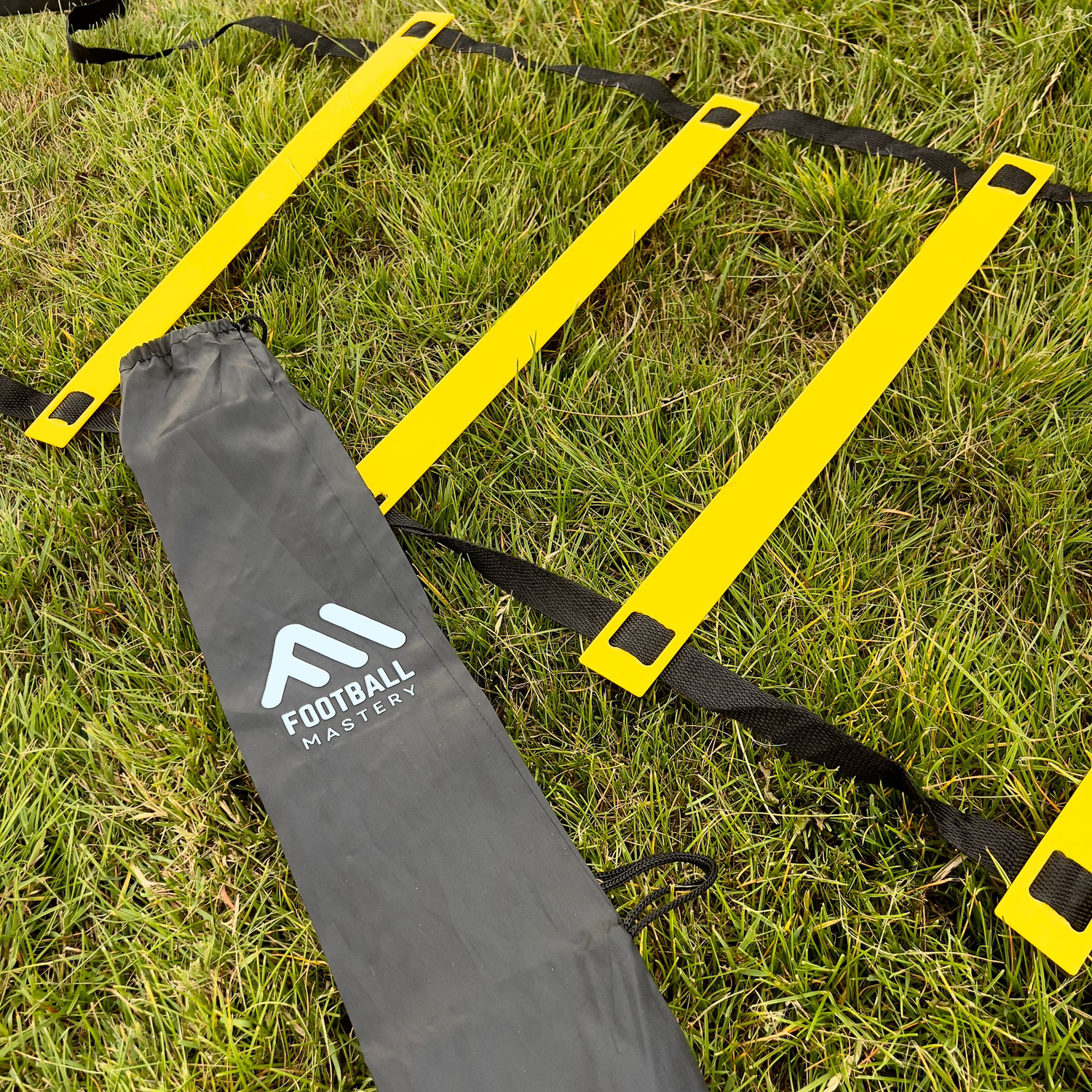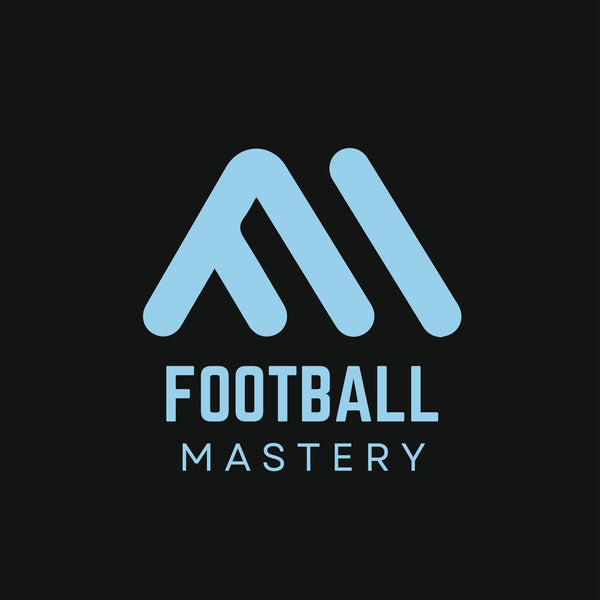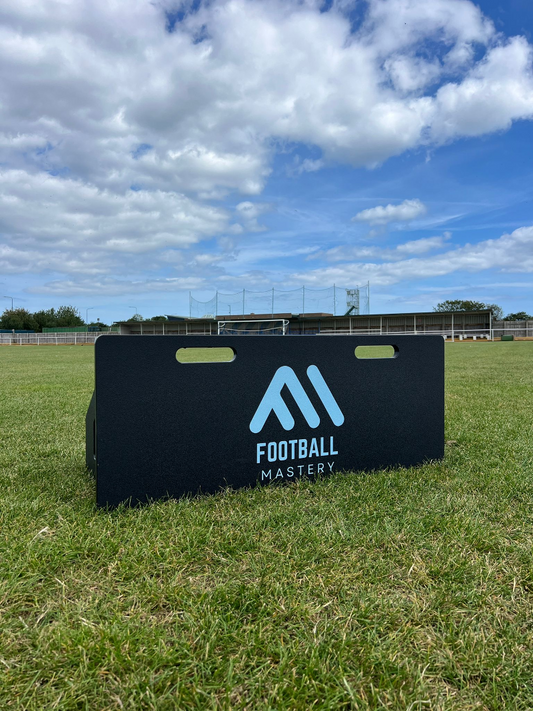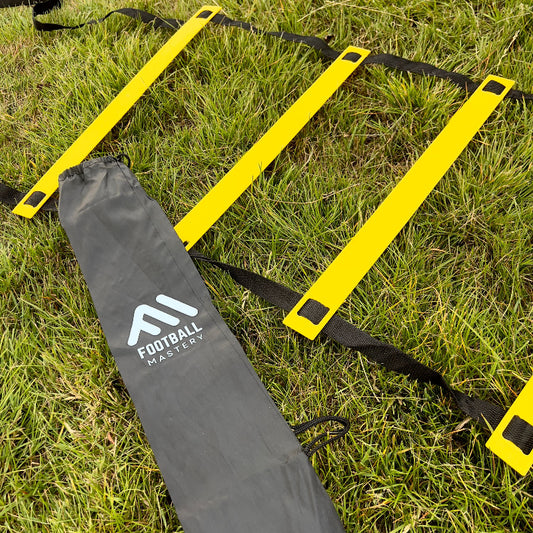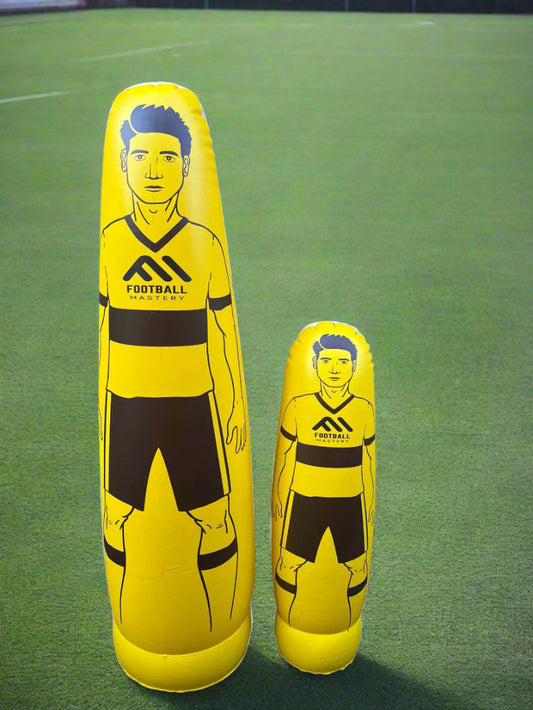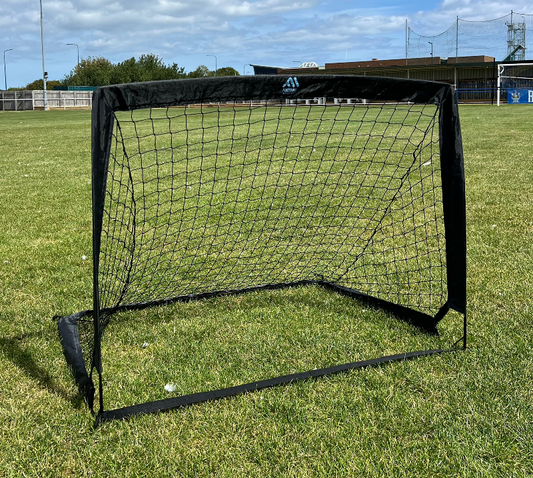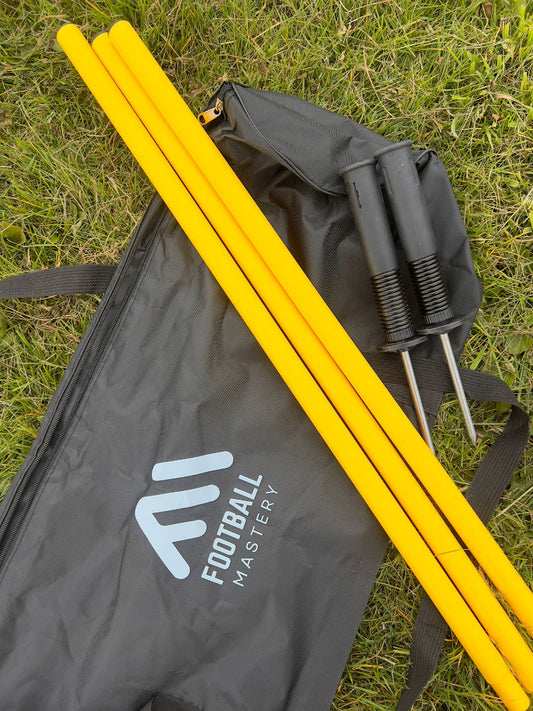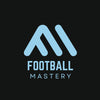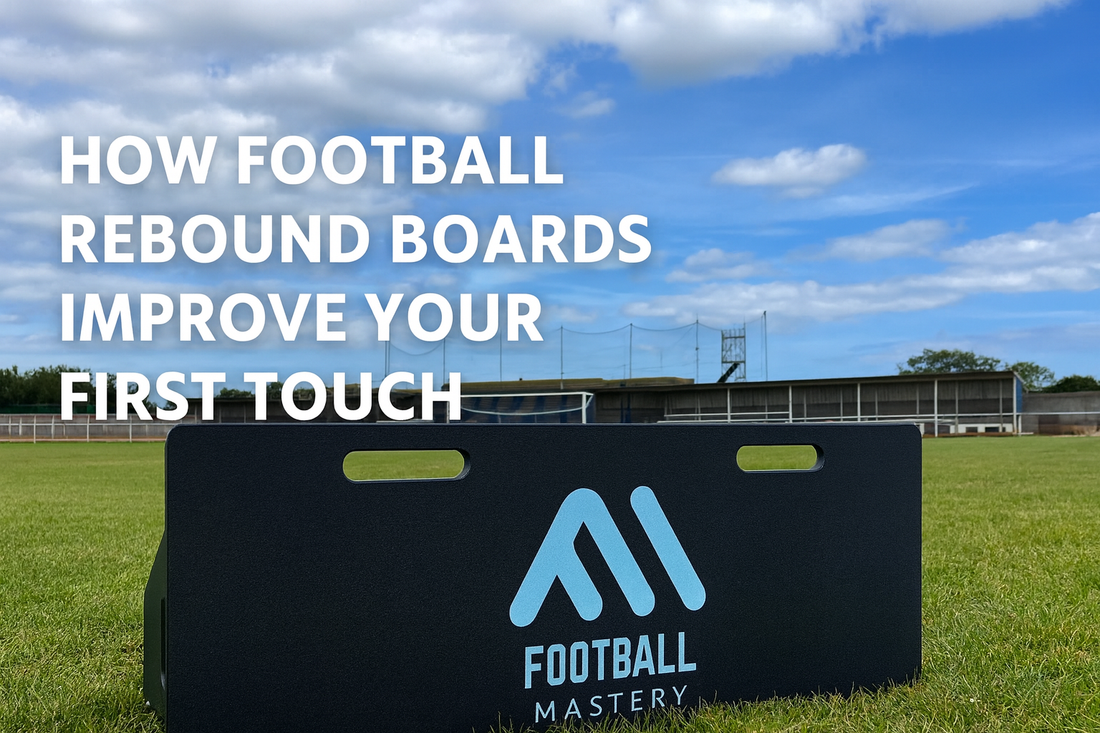
How Football Rebound Boards Improve Your First Touch
Share
Developing a world-class first touch isn't just for elite players — it's for anyone who wants to master the game. Football rebound boards offer an innovative and practical way to improve ball control, passing accuracy, and quick decision-making through game-like repetition. In this article, we explore how rebound boards simulate real-match scenarios, train your reaction time, and help embed muscle memory. You'll discover how to set up effective solo training sessions, how rebound angles develop instinctive movement, and why rebound drills are essential for cognitive development and tempo control. Whether you're training alone or preparing for small-sided matches, rebound boards offer a direct path to becoming more technically confident and match-ready.
The Value of Repetition in Football Training
One of the greatest differentiators between good players and great players is consistency under pressure. Repetition is the key to developing muscle memory, and it's muscle memory that allows players to instinctively make the right moves in a split-second.
Football rebound boards are designed to provide consistent, unpredictable ball returns, forcing you to react, adapt and respond — just as you would in a match. Whether it's simulating a defender's deflection or a loose ball bouncing out of a challenge, the variability of a rebound board creates countless scenarios to sharpen your technique.
“The more unpredictable the bounce, the more valuable the training becomes.”
The beauty of this approach lies in its simplicity. With nothing more than a board, a ball, and some space, players can replicate real match dynamics in a controlled environment. If you're just getting started or building a home setup, our Football Rebound Board is a versatile piece of kit designed for both precision and durability.
Improving Ball Control and First Touch
When people think of a "first touch", they often picture an elegant trap or smooth turn — but in reality, ball control under pressure is about far more than grace. It's about positional awareness, foot positioning, and being ready for what happens next.
A rebound board forces you to receive the ball from various angles and speeds, improving your ability to:
-
Trap the ball quickly under pressure
-
Shift your weight to adjust for unpredictable rebounds
-
Make a clean first-time pass or progressive move
-
Maintain tempo and fluidity in tight spaces
The angle of the board can be altered to produce different types of returns — from hard, ground-level passes to looping aerial rebounds — giving you an arsenal of scenarios to master. Our range of Football Mastery Rebound Boards offers multiple setups ideal for this kind of targeted skill work.
Reaction Time and Decision-Making
No amount of theory can replace the need for quick footwork and fast-thinking execution. With rebound boards, players are challenged to react within fractions of a second. This reactive training sharpens not only your physical responses, but your cognitive development as well.
Each pass you make into the board sets off a chain of decisions:
-
Do I use my left or right foot?
-
Is this a ball to control, volley, or pass first time?
-
How do I reposition for the next touch?
This develops your decision-making in real-time — under conditions that simulate the kind of touch under pressure you experience during match play. This is particularly powerful in solo training, where you're responsible for initiating, reacting, and controlling every movement.
If you're looking to combine reaction drills with additional gear like cones or hurdles for touch and go drills, consider exploring our Football Mastery Bundles, which offer complete setups tailored for high-intensity technical work.
Rebound Drills for Game Simulation
What makes rebound boards so effective is their ability to mimic game simulation scenarios — both in and out of possession. They work as a stand-in for an opponent or teammate, creating a dynamic environment where transition play becomes part of the training flow.
Here are three effective drills to start with:
1. One-Touch Passing with Movement
-
Stand 2–3 metres from the rebounder
-
Pass with your dominant foot and immediately move laterally
-
Receive and return the ball with your opposite foot
-
Repeat in both directions for 60-second intervals
2. Touch, Turn & Shoot
-
Pass into the board from the edge of the box
-
Control the rebound with a quick turn
-
Take a shot at goal (use a target or cone if training solo)
3. Chaos Control
-
Vary your passing power into the board
-
React to unpredictable bounces and trap the ball before it escapes
-
Use a first-time pass every third repetition to simulate pressure
These types of drills not only enhance ball reception, but they also improve tempo control, helping you regulate your play pace during intense or disorganised moments on the pitch.
Developing Agility and Positional Awareness
One of the more overlooked aspects of improving touch is how you move before and after the ball arrives. In real match conditions, receiving the ball flat-footed is often the difference between keeping possession or losing it.
When training with rebound boards, you naturally begin to fine-tune your agility, thanks to the need to reposition based on:
-
The ball’s angle of return
-
Its speed
-
Your next intended action
These micro-adjustments help develop better positional awareness — learning to open your body, adjust your stance, and stay on your toes. This ties directly into foot positioning, another technical detail that’s critical for clean first touches and swift transitions.
Whether you're playing in midfield and need to shift the ball under pressure, or you're a winger receiving a switch pass at pace, the habits built here have a direct match-day payoff.
For players looking to enhance this further, Football Mastery offers not just quality rebound boards but a complete philosophy rooted in improving every detail of player performance.
Creative Play and Game Realism
A static first touch is predictable. But a dynamic one opens up the pitch.
Football rebound boards are powerful tools for training creative play — developing your ability to:
-
Turn with a flick
-
Use feints
-
Combine control with acceleration
This type of improvisation isn’t just flair — it’s function. It lets you escape tight spaces, beat pressing opponents, or link fluidly with teammates in small-sided training games.
Example Drill: The “Turn & Transition”
-
Start with your back to the board
-
Play the ball in and receive on the half-turn
-
Shift your body and explode into space with your second touch
This combines transition play, quick footwork, and spatial awareness, while embedding patterns into your muscle memory that help in congested areas on the pitch.
As players train more dynamically, they begin to treat each rebound not just as a return pass, but as a new decision-making opportunity. That’s how rebound boards move from being equipment to becoming a creative partner in your development.
If you want a variety of boards to create different game-like situations, take a look at our full Rebound Board Collection — designed for everything from short-sharp passing to first-touch finishing.
Touch Under Pressure: Simulating Match Scenarios
Many players look good in warm-ups but struggle when they face pressing defenders. This disconnect usually comes from not training under realistic conditions.
Rebound boards bridge that gap by forcing players to control the ball at awkward heights, angles, and speeds. This introduces touch under pressure, even when you're training solo.
“You don’t need a defender breathing down your neck to train like they are.”
By introducing unpredictability into training — such as using the board’s edge, angling it for lofted returns, or adding resistance bands for movement before receiving — players develop composure and adaptability.
Here’s how you can elevate your solo sessions:
-
Set up a few cones behind the rebounder to simulate defenders
-
Add a time constraint — must control and release the ball within 2 seconds
-
Try controlling with the outside of the foot, chest, or thigh
This makes every repetition an opportunity to improve ball reception, maintain tempo control, and grow the ability to think clearly under match-like pressure.
To make this kind of training even more effective, our Football Mastery Bundles include equipment designed to work in harmony with rebound boards — so your drills become multidimensional.
Integrating Rebound Boards into Full Training Cycles
Rebound boards are most effective when not treated in isolation, but as part of a broader technical and physical plan. Their strength lies in versatility — you can train:
-
Volleys, by simulating bouncing crosses or deflections
-
First-time passing, in one-touch flow drills
-
Ball control in fatigue, by repeating high-rep touches late in the session
-
Cognitive development, by layering decision-making into passing patterns
These training segments can be split across weekly cycles:
| Day | Focus | Example Use of Rebound Board |
|---|---|---|
| Monday | Touch & Movement | Touch-and-go drills; lateral control |
| Wednesday | Creativity | Flicks, turns, dribble-exit drills |
| Friday | Shooting | Rebound & finish from varied angles |
| Weekend | Full game simulation | Combo passing with target shooting |
By incorporating these into your regular football schedule, you give structure to your improvement — and ensure each session builds toward real, match-specific results.
Tailoring Rebound Training by Playing Position
While every player benefits from a better first touch, how you train that touch should depend on your role on the pitch. Rebound boards can be tailored to simulate position-specific situations, creating sessions that feel closer to live match conditions.
⚽ Central Midfielders
-
Focus: Tight space control, rapid ball reception, quick directional play.
-
Drill idea: Play into the rebound board, receive with a half-turn, and shift the ball left/right to simulate evading a press.
-
Key gains: Improves transition play, awareness, and tempo control.
🛡 Defenders
-
Focus: First-time clearances, control under pressure, passing out from the back.
-
Drill idea: Rebound aerial balls and immediately distribute a ground pass into space.
-
Key gains: Enhances reaction time, footwork, and clearing technique.
🎯 Forwards
-
Focus: Sharp shooting, rebounds, fast touches inside the box.
-
Drill idea: Hit the board at pace, react to the bounce, and finish with minimal touches.
-
Key gains: Trains volleys, close-range finishing, and instinctive first-time passes.
🧤 Goalkeepers
-
Focus: Reflexes, diving saves, positioning.
-
Drill idea: Bounce throws or kicks off the board at varied angles to simulate deflections.
-
Key gains: Builds cognitive development, foot placement, and agility.
Every player, regardless of age or ability, benefits when training mirrors their real-match demands. Rebound boards make that possible without requiring a full team or coaching staff.
Choosing the Right Rebound Board
Not all rebound boards are created equal. The ideal setup will depend on your goals, space, and intensity level. Let’s break down some common types:
| Rebound Board Type | Best For | Characteristics |
|---|---|---|
| Flat Rebound Board | Short passing, control drills | Low bounce, high accuracy |
| Angled Rebounder | Dynamic returns, shooting | Simulates unpredictable bounce |
| Dual-Surface Board | Touch variety | Offers two rebound textures/speeds |
| Portable Boards | Versatility | Easy to move, great for on-the-go training |
Our Football Mastery Rebound Boards are specifically engineered for player development — with the right bounce, surface feel, and durability for hundreds of reps per session.
Whether you’re in a back garden or a club facility, having the right equipment builds trust in your touch. You shouldn’t have to fight your kit to train at a high level.
Long-Term Progression: Beyond the First Touch
As players improve their first touch, their expectations shift — and rightly so. Once you’ve laid the foundation, rebound boards become a tool for higher-level work:
📈 Progress Tracking
Create challenge-based sessions:
-
“Complete 10 one-touch passes with your weak foot”
-
“Control and volley 5 in a row from different angles”
-
“Beat the bounce — control the ball before it hits the ground”
These targets not only make training more engaging, but measurable.
🧠 Mental Sharpening
Use rebound drills at the end of training when fatigued. Why? Because matches aren’t played at 100% freshness. Training while tired improves your ability to stay sharp when it matters most — developing true game simulation conditioning.
🔁 Drill Rotation
Rotate between:
-
Touch and go drills
-
Combination passing
-
High-intensity reaction blocks
-
Creative drills with cones and markers
This keeps sessions engaging and ensures you're constantly adapting.
To help you build complete routines, Football Mastery offers all-in-one kits within our Mastery Bundles — perfect for those looking to systemise their technical development with minimal setup.
Final Thoughts: A Tool for Every Footballer
Whether you're an academy prospect, weekend warrior, or complete beginner, a rebound board gives you access to quality repetitions that build confidence, competence, and composure on the ball.
By simulating the unpredictable nature of match play, it trains you to be calm under pressure, composed in tight areas, and ready to take the next step — whether that's a first-time pass, a split-second dribble, or a decisive finish.
And the best part? You can train anywhere, anytime.
“Don’t wait for a coach to improve your touch. Take ownership of your development.”
Rebound boards are a modern training essential. Use them well, and your first touch won’t just improve — it’ll become your biggest asset.
Explore the full range of Football Mastery training tools:
👉 footballmastery.co.uk
Frequently Asked Questions (FAQ)
1. Can rebound boards be used effectively indoors?
Yes, many rebound boards — especially smaller, portable ones — are suitable for indoor use. However, ensure the surface is non-slip and that there's enough space to control rebounded balls safely. Always use low-impact balls indoors to avoid damage.
2. What age can you start using a rebound board?
Children as young as 6 can begin using rebound boards with lighter balls and slower drills. For younger players, start with basic two-touch control drills before progressing to more reactive exercises.
3. Can rebound boards be used for weak foot training?
Absolutely. In fact, they’re ideal for weak foot development. Because you control the pace and repetition, rebounders allow players to isolate their weaker foot and build coordination and confidence over time.
4. Do rebound boards help with dribbling skills too?
Indirectly, yes. While rebound boards primarily target first touch and control, they enhance your ability to receive and move — the starting point for effective dribbling. Many players use a rebound board as part of a touch-and-move combination drill that flows into dribbling patterns.
5. How long should I train with a rebound board to see real improvement?
Even 15–20 minutes a day, 3–4 times a week, can lead to noticeable improvement in ball control, first touch, and confidence. Consistency is more important than duration — short, sharp sessions done regularly yield the best results.
6. Do I need a flat surface to use a rebound board?
A relatively flat and stable surface is recommended for safe and effective use. Uneven ground may alter rebound angles and make the ball behave unpredictably, especially for drills involving low passes or first-time shots.
7. What types of balls are best to use with a rebound board?
Standard size 4 or 5 footballs work best, depending on age group. However, using a slightly heavier or less bouncy ball can improve control during early training phases. For younger players, foam or lightweight training balls are ideal.
8. Can I use a rebound board to improve aerial control and chest touches?
Yes, especially if your board can be angled to provide lofted returns. This simulates headers, thigh control, and chest traps, helping players handle high balls and improve touch under pressure in aerial duels.
9. What’s the difference between a rebound board and a rebound net?
-
Rebound boards typically offer faster, more grounded and predictable returns.
-
Rebound nets tend to create more unpredictable bounce and can be better for reaction training.
Boards are generally preferred for tight control and passing, while nets may be used for goalkeeping or long-ball drills. Explore both styles here.
10. How do I keep my rebound board in top condition?
To maintain your board:
-
Store it indoors or under cover when not in use
-
Wipe clean after muddy sessions
-
Check for loose screws or warped surfaces regularly
-
Avoid leaving it in direct sun or rain for extended periods
Proper care ensures rebound consistency and extends the life of your equipment.
